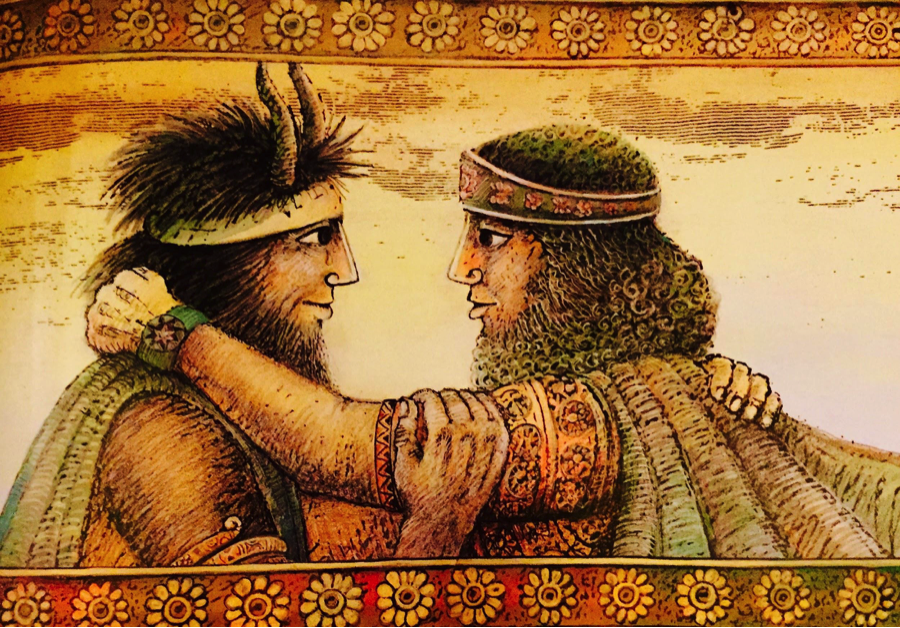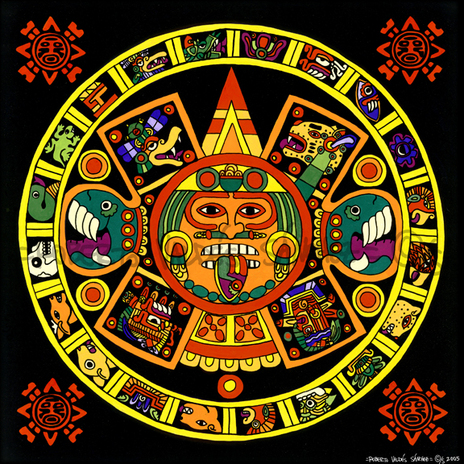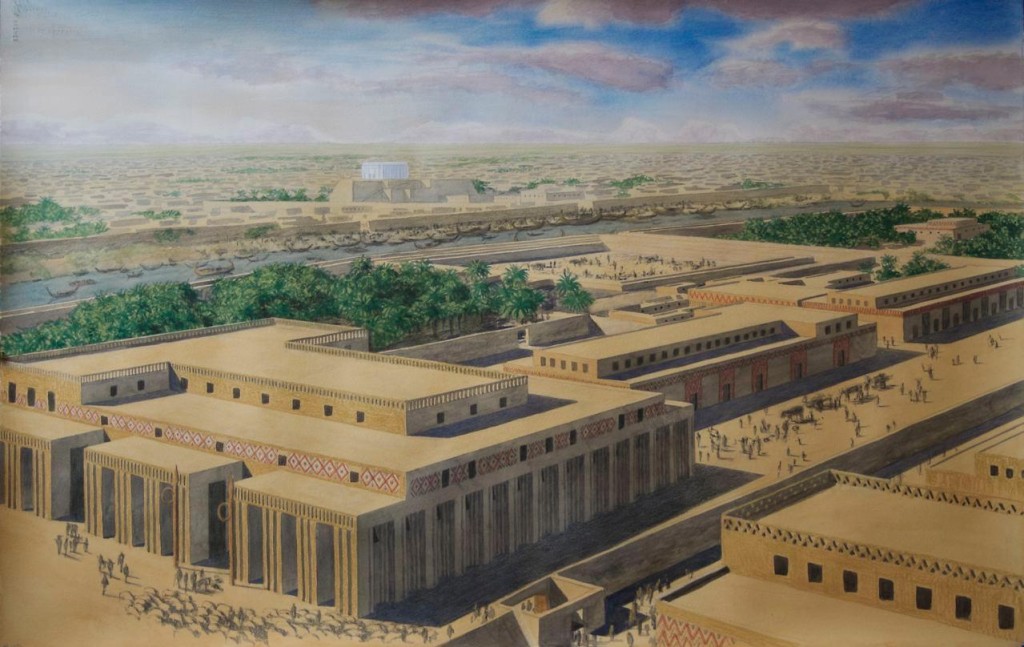|
View: 4975|Reply: 6
|
Epic of Gilgamesh vs Christianity
[Copy link]
|
|
|
Do Jesus Christ and Gilgamesh Share Similarities or a Common Tradition?
Monday, December 28, 2009
As was pointed out earlier, the epic of Gilgamesh is not only one of the oldest recorded stories known to man, but it was also familiar to Israel and may have been rewritten into the Old Testament. It should come as no surprise that, in addition to the New Testament, elements from the epic of Gilgamesh may have crept into several other literary creations.
According to Sumerian cosmology, when Ea had created man he mixed the blood of a god (who was slaughtered for the purpose) in with the clay, so that humans would have a divine spirit. However, the blood was not the best material. “In one tradition, at least, he was the leader of the rebels, who had instigated a mutiny” (George, xl). Therefore men were both part divine, but also flawed and wayward. It is likely that the story of Gilgamesh was used as a framework for religious rites or cult practices, as copies have been found in temples; copying the text may have been part of the training process for temple-astrologers (George, xxvii).
If Gilgamesh ever existed as an actual king (as tradition claims), he would have flourished around 2750BC (George, xxxi). According to the myth, Gilgamesh was a city tyrant whose mother was a goddess. He was a cruel ruler, forcing his people into labor and freely exercising his kingly right to sleep with girls on their wedding day. The people prayed to gods to make an equal/rival for Gilgamesh, and they created Enkidu – a creature that was half bull, half human. Enkidu was an idyllic spirit, living in harmony with nature. Gilgamesh orders the harlot Shamhat to seduce him, which will weaken him by alienating him from nature. They coupled for seven days and seven nights. In language reminiscent of the biblical garden story, Enkidu finds himself a “changed but wiser creature” (Gordon 45).
Shamhat brings him to society, but he has trouble eating bread, drinking out of glasses, or wearing clothes (could Gilgamesh also be the root of the modern Tarzan story?) Enkidu challenges Gilgamesh and they fight, but recognize each other’s greatness and decide, rather than destroy each other, to work together and practice heroic virtue. Thus begins a series of their adventures and conquests. First, they destroy the dragon (or ogre) Humbaba in the cedar forest, preferring fame to security, a dedication that may call Achilles or Beowulf to mind.
In the next episode, Gilgamesh dresses so attractively that the goddess Ishtar (Ianna) wants to marry him, but he refuses her. In retribution, she asks permission from the great father god Anu to have the ‘Bull of Heaven’ at her disposal to slay Gilgamesh. At first he says no, but she (as a goddess of the underworld) threatens to bring up all the dead, so that they outnumber and consume the living. Anu gives her the bull, however, Gilgamesh and Enkidu overpower and butcher it. Enkidu cuts off the leg of the bull and throws it at Ishtar as a terrible insult. Ishtar, after mourning the death of the bull, has the gods convene to decide on a punishment; they choose to kill Enkidu. Gilgamesh tries to bring him back to life in vain. Enkidu’s death instills in him a terrible fear of death, and so he begins a quest for immortality.
Only one man he knew of had ever been immortal – the Babylonian Noah named Utnapishti, who, along with his wife, became immortal after the flood. Therefore, Gilgamesh determines to seek him out. First, he travels to the edge of the ocean that surrounds the world, where he encounters the wise Shiduri; she tells him he must find Ur-shanabi, the ferryman of Uta-napishti. Ur-shanabi takes him to finds him to Uta-napishti’s enchanted realm, and Gilgamesh hears the flood story.
The gods had decided to destroy mankind, but one god, Ea, was friendly with Utnapishtim and determined to save him. Speaking to him indirectly (he told Utnapishtim to go into a reed hut first), he told him to disregard his possessions and construct an ark according to exact specifications; and to gather the seed of all living creatures, his wife, adequate supplies and a crew. Rains came, and then receded. The ark landed on a mountain. Utnapishtim sent out first a dove, then a swallow, then a raven, and determined that the earth was dry. He then got out and sacrificed to the gods, who hover over the sweet-smelling sacrifice like flies (Yahweh does the same thing in the Genesis version; although later in the Bible he claims to have no need of such sacrifices). Utnapishtim and his wife became immortal.
They tell Gilgamesh to stay awake for seven days to see if he is worthy of becoming immortal as well, but he fails the test. Next, they groom him and give him a magical garment that won’t get dirty, and prepare him for his return journey. Utnapishtim’s wife discloses a secret mystery of the gods – a plant at the bottom of the sea that gives immortality – so he puts rocks on his feet and goes down to get it. Unforunately he decides to save the plant for later and a snake eats it; thus his hard work goes to the serpent. Although he loses physical immortality, later versions of the story have Gilgamesh become a deified ruler of the shades in the underworld, and “give verdicts” or judge the dead (George, li).
There are few overt similarities between Gilgamesh and Jesus Christ. His journey was not into the underworld (which was ruled by Dumuzi and Ianna), but instead to a land of the immortals across the sea. In the end his quest for immortality failed; he died – but later versions of the story have Gilgamesh become a deified ruler of the shades in the underworld, and “give verdicts” or judge the dead (George, li).
Although Jesus was said to have been raised in his physical body, he quickly ‘ascended into heaven’ and judges souls. He does this because, in the beginning of time, Adam and Eve sinned by eating the tree of knowledge and thus the tree of life was taken away from them (or rather, them from it). Their fall was initiated by the temptations of a snake – so in a way, their immortality was taken by the snake, as it was in the Gilgamesh epic.
http://www.holyblasphemy.net/jesus-and-gilgamesh-similarities/
|
|
|
|
|
|
|
|
|
|
|
|
Gilgamesh
From Wikipedia, the free encyclopedia
For other uses, see Gilgamesh (disambiguation).
Gilgamesh (/ɡɪlˈɡɑːmɛʃ/;[1] 𒄑𒂆𒈦, Gilgameš, originally Bilgamesh 𒄑𒉈𒂵𒈩) is the main character in the Epic of Gilgamesh, an Akkadian poem that is considered the first great work of literature,[2] and in earlier Sumerian poems. In the epic, Gilgamesh is a demigod of superhuman strength who builds the city walls of Uruk to defend his people and after the death of his friend Enkidu[3] travels to meet the sage Utnapishtim, who survived the Great Flood. His name means something to the effect of "The Ancestor is a Young-man" (J.L. Hayes "A Manual of Sumerian Grammar and Texts"), from Bil.ga = Ancestor, Elder (J.Halloran Sum.Lexicon p. 33) and Mes/Mesh3 = Young-Man (Halloran Sum.Lexicon p. 174). (See also The Electronic Pennsylvania Sumerian Dictionary)[4]
Gilgamesh is generally seen by scholars as a historical figure, since inscriptions have been found which confirm the existence of other figures associated with him in the epic. If Gilgamesh existed, he probably was a king who reigned sometime between 2800 and 2500 BC.[5][not verified in body] The Sumerian King List claims that Gilgamesh ruled the city of Uruk for 126 years. According to the Tummal Inscription,[6] Gilgamesh and his son Urlugal rebuilt the sanctuary of the goddess Ninlil in Tummal, a sacred quarter in her city of Nippur. |
This post contains more resources
You have to Login for download or view attachment(s). No Account? Register
x
|
|
|
|
|
|
|
|
|
|
|
apa perasaan para penganut delusional bahawa agama korang adalah diciplak dari sebuah karya fantasi?  |
|
|
|
|
|
|
|
|
|
|
|
Gilgamesh adalah sebuah karya sastera tau....... bukan kitab agama 
http://myththeoriginofman.com/?p=2013
THE EPIC OF GILGAMESH EXPLAINED
Posted on December 20, 2016 by Lizardgod

The Epic of Gilgamesh Explained in Popular Modern Media
By Aaron Steiner
When I was establishing the story line for the book MYTH, a series of components and elements were put into place that set up the future story lines for the next series of books that I am writing… and the Epic of Gilgamesh will definitely be on that list. These are the tales of the human hybrid children who were produced by the extraterrestrial reptilian beings known as the Anunaki… the creators of the human race. The Anunaki had intimate relations with the daughters of their original creation, Eve, in the beginning of our human drama. And they are much of the focus of these story lines to come, as well as the children of pure Anunaki bloodline.

The human hybrid Anunaki babies could be identified by certain specific traits that set them apart from the first ebony skinned, human children of Eve. These would be – fair skin, elongated facial features such as pointed ears and high cheek bones. Other traits would be reptilian dominate features such as – horns, an extra digit, tail.
The story of Gilgamesh chronicles the details of one of the Anunaki/Human hybrid children who was the great grandson to a high ranking Anunaki official named – Enlil. To my delight, as I was watching the most current episode of the comedy TV show – American Dad, the Christmas based theme went into a very accurate ancient Sumerian detail regarding the Gilgamesh story line… even how the characters were visually depicted! The presentation was brief, but the components were all in alignment with my books account of the Anunaki and their exploits with the humans that they had created.

In the episode, Santa Clause was on a rampage to gain an ancient power from a giant that was slain by Gilgamesh. He had abducted the Smith family and forced them to listen to his “ultimate plan”. Santa then went into detail explaining the scholar’s version of the ancient Sumerian tale of Gilgamesh. He went on to explain how Gilgamesh (depicted as a black man even though he was probably fair skinned with horns… but close enough) and his companion Enkidu (who was depicted as a full blown Anunaki hybrid, complete with horns) were hunting a giant. The giants of old were also part of the Anunaki hybrid bloodline, so the one that they were hunting had horns as well.

The giants were known to be very powerful as well as magical, and they were ultimately eliminated through a genocide campaign initiated by the Anunaki about 5,000 years into human history. This campaign is documented by the Mayan Aztec calendar in the glyph of the Jaguar located in the upper right hand corner of the central face. The other three glyph also represent Anunaki genocide campaigns, but they were more geared toward using their weather technology to eliminate the hybrid human groups they had deemed undesirable… and they did this every 5,125 years.

So much of our human history has been lost by these campaigns… especially the last one, because it caused the whole earth to flood and in turn, everything had gotten buried in a thick layer of mud. The only reason any of our history is still intact is because the Anunaki who had come back after the flood waters had receded and built Sumeria for the group of humans that had been living on Mars.
Apparently they had many of their fair skinned human hybrid children living on Mars for a time, at least until the Earth floodwaters receded, and they came back to Earth and settled on the first major land mass that had been exposed – the Caucasus Plateau. Hence… you have Caucasians. Not many people are aware of this version of our history, which is not surprising… due to how much of these stories are hidden or convoluted through shoddy interpretation.

It is refreshing to find elements of our obscured past coming to the surface for humanity to reflect upon and process, because at some point, the true story of our human history and origins will become common knowledge. And in this, much dispute and debate will finally be put to rest… making the world a much better place to live in, for everyone.
|
|
|
|
|
|
|
|
|
|
| |
|